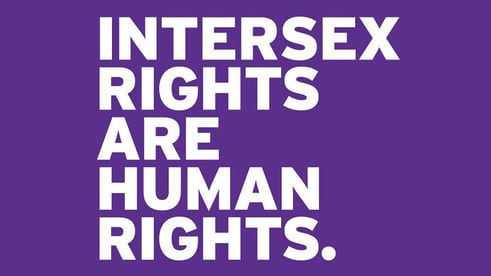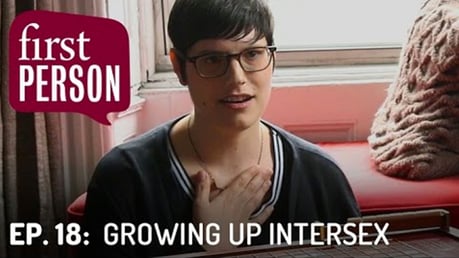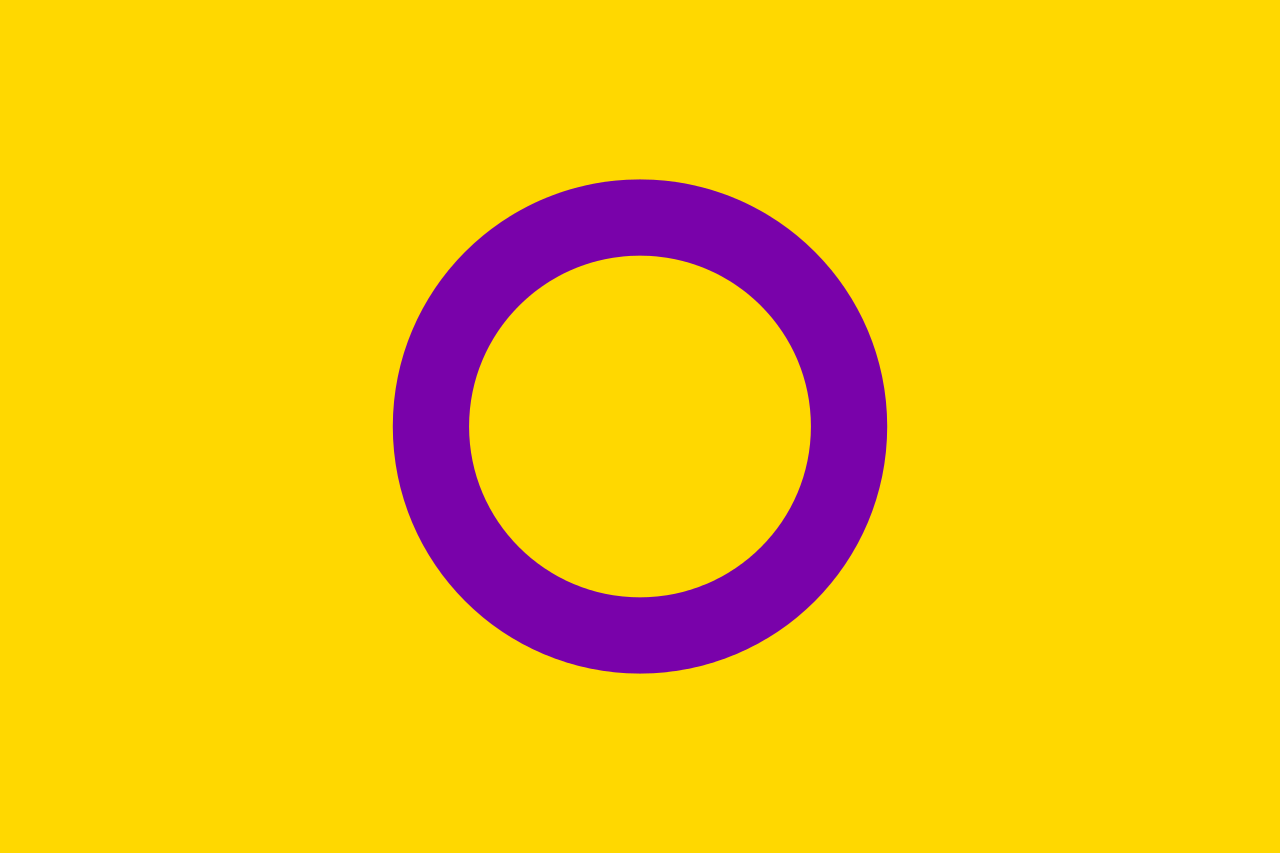Intersex flag
Hey there, dear reader! It’s January and I’ve been thinking.
I’ve been thinking about the fact that a new year has come. Every November, my subconscious pinches my conscious brain, reminding me gently that the year’s almost over. And by December, I – like many folks – am reflecting on all the events of those past months, taking stock of what I did, what I didn’t, what I enjoyed, what I gritted my teeth through, where I went, and where I’d like to be going in the year to come.
And now we’re here. I’m finding myself reflecting a lot on two days that are really important to me and my community of intersex people – Intersex Solidarity Day and Intersex Awareness Day. Intersex Solidarity Day, also known as Intersex Day of Remembrance, is an internationally-recognized celebration of intersex people and time to reflect and raise awareness about intersex issues. ISD (or IDR) is celebrated on this day in commemoration of Herculine Barbin, a 19th c French person who’d be considered intersex today (referred to as a “hermaphrodite” – a term that is now widely regarded as pejorative when used by non-intersex people). Barbin took their own life after being “discovered” to have non-normative genitals, barred from marrying the woman they loved, and being forced to live as a man. You can read about Barbin’s life from their diary, published posthumously (but feel free to ignore the yucky foreword by Michel Foucault and sensationalistic excerpts from Barbin’s medical documents at the end – no thanks!).

Intersex Day Project 2016, NYC
ISD isn’t the sole celebration of intersex people – it follows on the heels of Intersex Awareness Day on October 26th. This day commemorates the date of the first public protest of intersex medical “treatment” by intersex people in the US – members of the now-defunct Intersex Society of North America (ISNA) who carried signs reading, “Hermaphrodites With Attitude” (*SWOON*). This protest happened in 1996; that’s right – the intersex movement proper is only a decade old! IAD has historically been observed almost exclusively in the US and Canada, but has gained traction globally in the last few years. To get an idea of how much it’s caught on, check out all the IAD and ISD events that took place this year and in past years on the online hub, Intersex Day! It’s amazing to see how awareness about intersex people and intersex issues has grown from that tiny group of furious activists who knew they – and future intersex kids – deserved so, so much better.
Although I was 12 years old when Intersex Awareness Day first began (and had already been medicalized for 4 years), the 2016 celebrations were the 7th Intersex Awareness Day and the 5th Intersex Solidary Day I was aware of. I didn’t know that it existed before then. At 12 years old, I was wondering if and when I’d ever meet another intersex person, and was starting to become more and more upset by the medical “treatments” I was forced to undergo by my endocrinologist. If I’d known there was such a thing called Intersex Awareness Day, I think I would have thought it was a day to raise money to try to correct the medical problem I’d been told that being intersex was, to fix all the bodies I’d learn more than a decade later don’t actually need fixing. When I learned that Intersex Awareness Day existed, it was like a little light turned on inside me. Knowing that some intersex people didn’t view their bodies as needing fixing, that were actually PROUD to be intersex, IDENTIFIED as intersex, and CELEBRATED being intersex? That made me feel like maybe this being-intersex thing was going to be okay. That all the stuff I’d gone through in my childhood and adolescence – being poked and prodded by doctors against my will twice a year (and then in the last two years, once a year) – wasn’t all that it meant to be intersex. Maybe it’s just a way that some people are. Maybe it’s not something you have to hide. Maybe it’s something you’re proud of. Maybe it’s something you actually shout through a megaphone while waving a giant banner. Maybe it’s something you love.
Maybe it’s part of what makes you you.

Point Scholar Claudia Astorino featured on "Growing Up Intersex", Ep. 18 of PBS Digital Studios' First Person.
This is what it means to have a day – or two days! – celebrating parts of you that you’d been told not only weren’t worth celebrating, but that you should actively hide, conceal at all costs, lie about, try to erase away by trying to be the most girliest girl or boy-est boy you could possibly be, or fake being if you couldn’t. Learning that Intersex Awareness Day and Intersex Solidarity Day existed was one of several waves of recognition in a sea change that pulled me away from the stigma and shame I was taught to feel, toward calmer waters where I wasn’t always struggling to keep afloat, where I could breathe and enjoy some sun on my face. IAD validated my body, my self, and my existence in ways few things ever have in my life. IAD feels less like a day to observe, but rather a sacred holiday that reminds us that we, with our non-normative bodies and difficult pasts, belong – just as we are.
See you next November for the celebrations. <3

This post was written by Point Scholar Claudia Astorino.
Claudia is a scientist pursuing her Ph.D. in physical anthropology, and an intersex activist raising awareness about intersex human rights issues. Claudia’s scholarly work focuses on biological variation in the human skeleton and its relevance in interpreting human evolution. Read more about Claudia here.

